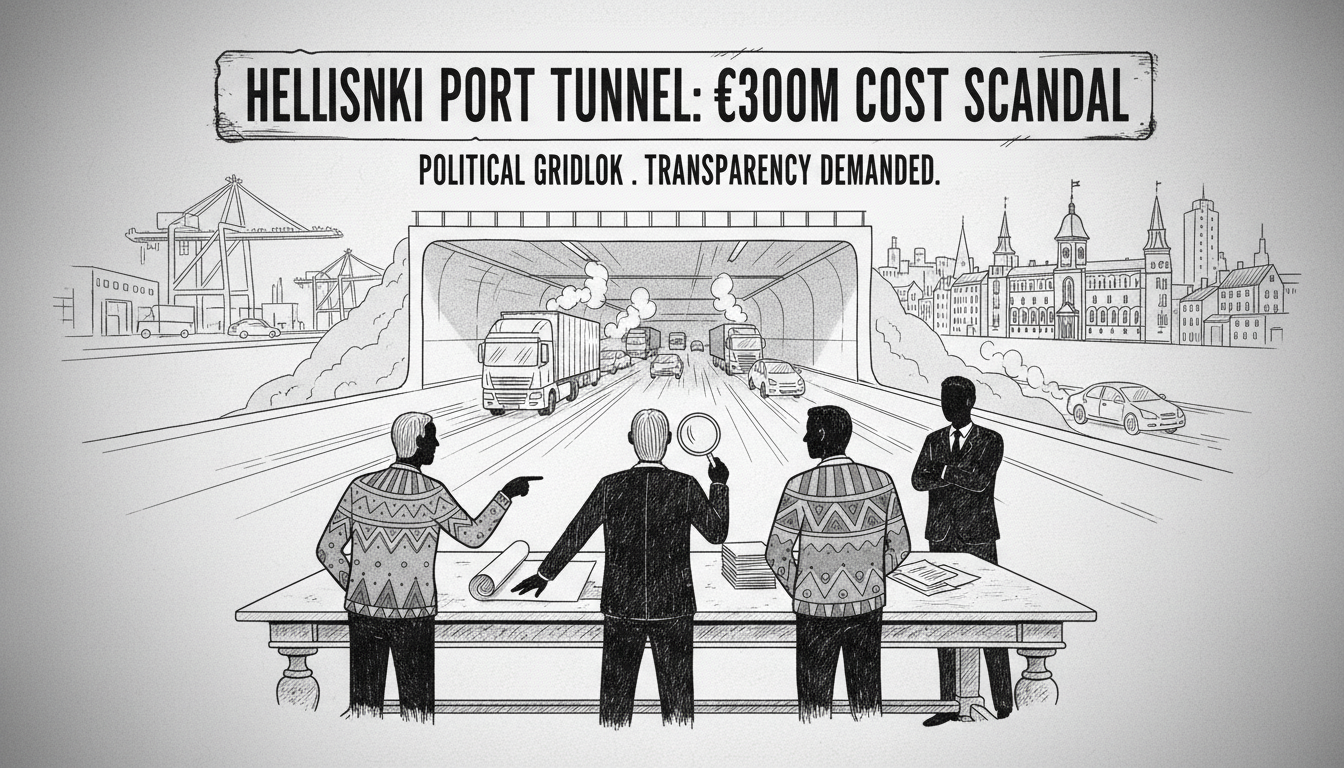Helsinki city officials refuse to conduct a detailed cost-benefit analysis for the proposed Jätkäsaari port tunnel. The project carries an estimated price tag of 300 million euros.
Twenty-six politicians from four different parties demanded closer examination of the tunnel's expenses and societal impacts. The city administration maintains such assessment is unnecessary.
The officials claim the port tunnel represents an investment by Helsinki's port authority, not the city itself. They state evaluating profitability falls to the company's board and management.
Next week, the city environment committee will review the tunnel proposal through two separate submissions. One concerns the actual 300 million euro tunnel plan, while the other addresses the political demand for more detailed cost analysis.
The second proposal comes from Green Party representative Hannu Oskala, backed by politicians from the Greens, Left Alliance, Centre Party and Social Democrats. They want a socioeconomic cost-benefit assessment completed before any final decisions.
Such analyses are standard practice for major transportation investments in Helsinki, including rail projects. These calculations typically evaluate environmental effects, safety impacts and indirect investments.
Oskala argues the assessment remains justified even though Helsinki Port Ltd, a fully city-owned company, would make the actual investment. He contends this effectively makes it a city investment.
The completed tunnel would redirect heavy traffic from West Harbor underground to Länsiväylä highway. City planners hope it will solve Jätkäsaari's traffic congestion when Tallinn ferry operations concentrate in West Harbor.
According to traffic forecasts completed earlier this year, the tunnel would carry slightly over one-third of West Harbor traffic by 2040. This translates to approximately 5,900 vehicles daily.
The political disagreement highlights tensions between city administration and elected officials regarding infrastructure transparency. Both sides present reasonable arguments, but citizens ultimately bear the financial risk for major projects.
What happens when city-owned companies undertake massive investments without standard public oversight procedures? Helsinki residents might wonder whether 300 million euros warrants more thorough scrutiny, regardless of which city entity signs the checks.
